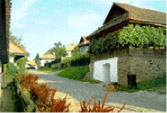 |
|
 |
||||||||||||||||
 |
||||||||||||||||
 |
||||||||||||||||
 |
||||||||||||||||
|
||||||||||||||||
UNESCO's World Heritage List can be seen as a celebration of both the greatness of nature and the greatness of culture. The list acknowledges humankind's capacity to feel awed by the beauty and power of the "wonders" of nature; similarly, it acknowledges humankind's ability to create its own great structures by recombining elements of the natural world in unique ways. The UNESCO World Heritage List was established to preserve the great structures of all the diverse cultures of the world. From this point of view, such structures are not treasures of particular nations only, but are the heritage of all humankind. Thus, the concept of the cultural and natural wonders as "world heritage" was born. In 1972, the UNESCO World Heritage List was established, since, in the words of the General Assembly Resolution, "deterioration or disappearance of an item of the culture or natural heritage constitutes harmful impoverishment of all the nations of the world". At this writing, over 851 properties are on UNESCO's list: 660 cultural, 166 natural, and 25 mixed properties. The cultural sites include the Great Wall of China, the historic district of Quebec in Canada, the Pyramids of Egypt, Mont-Saint Michel and its bay in France, Monticello and the University of Virginia in Charlottesville in the United States. click to open a printable version of this passage |
